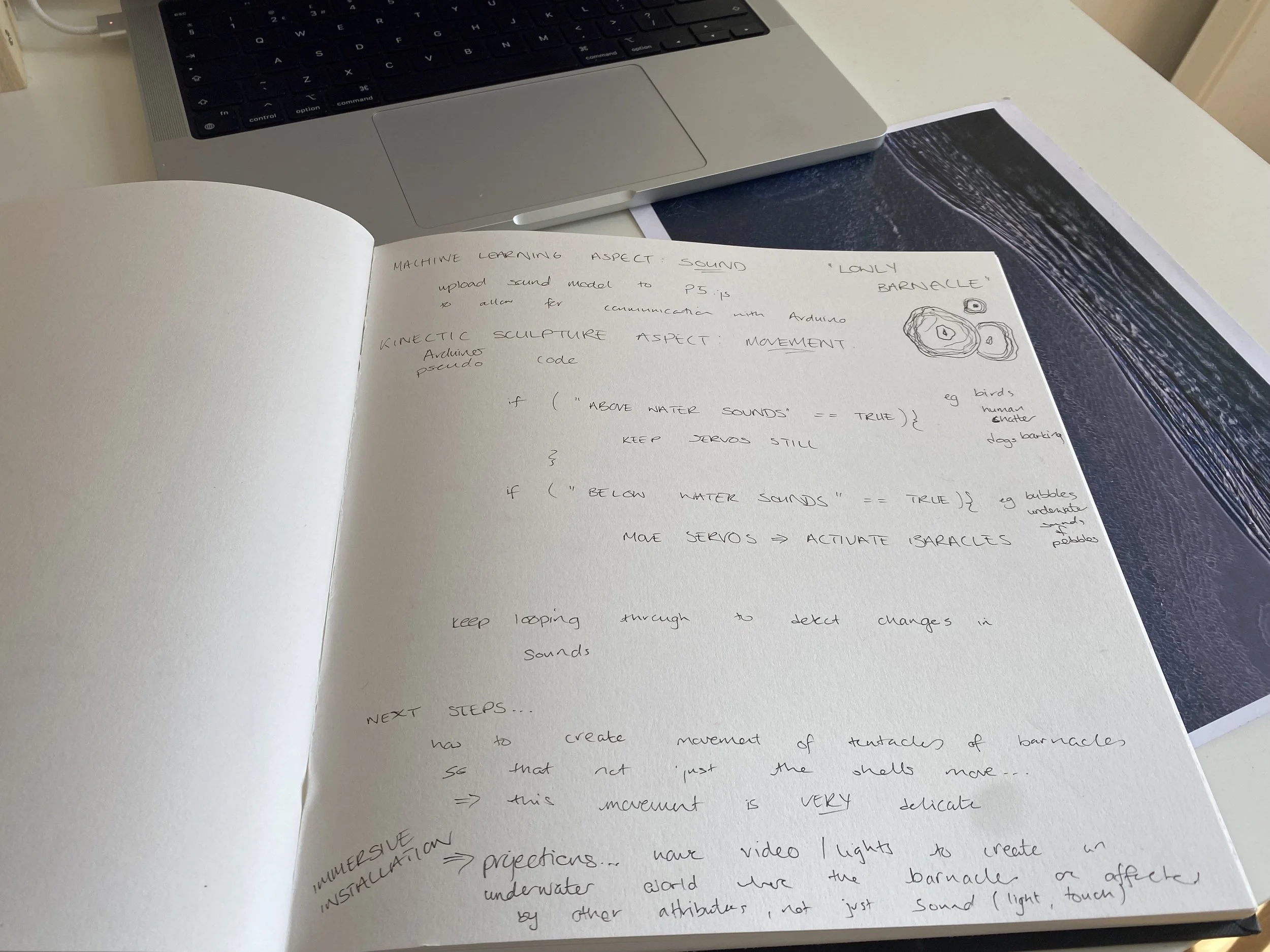2024, Work in Progress, funded by DYCP Arts Council England
The Lowly Barnacle is a kinetic sculpture that investigates the interplay between biological evolution and artificial intelligence, drawing inspiration from Charles Darwin’s evolutionary theory and Alan Turing’s fascination with crustaceans. At its core, the work reimagines the adaptive strategies of barnacles — particularly their mating optimisation algorithm, which has informed computational approaches to problem-solving — as a dynamic and responsive system.
The sculpture comprises 3D-printed barnacles attached to servo motors, animated through a machine learning model trained by the artist. Two sets of sounds were used: recordings of above-water environments (such as birdsong), and underwater recordings. When the system identifies above-water sounds, the barnacles remain still in a protective pose. In contrast, underwater sounds prompt movement, mimicking the barnacle’s natural feeding and reproductive behaviors.
Rooted in hydrofeminist thought, The Lowly Barnacle underscores the symbiotic and relational nature of these organisms — creatures that live in liminal, intertidal zones, forming dense, interconnected colonies. Unlike traditional representations of marine life or technology, this sculpture creates a sensory storytelling experience, making the often-invisible processes of adaptation both visible and tangible.
By drawing from the evolutionary insights of Darwin and the computational curiosity of Turing, the piece offers a compelling narrative on the synergy between natural and artificial systems. It positions barnacles not as passive organisms, but as a lens through which we might better understand continuous learning, resilience, and care. In doing so, The Lowly Barnacle urges us to rethink the ethical responsibilities we hold in shaping technology’s future — and what we might learn by listening more closely to the wisdom of the sea.








